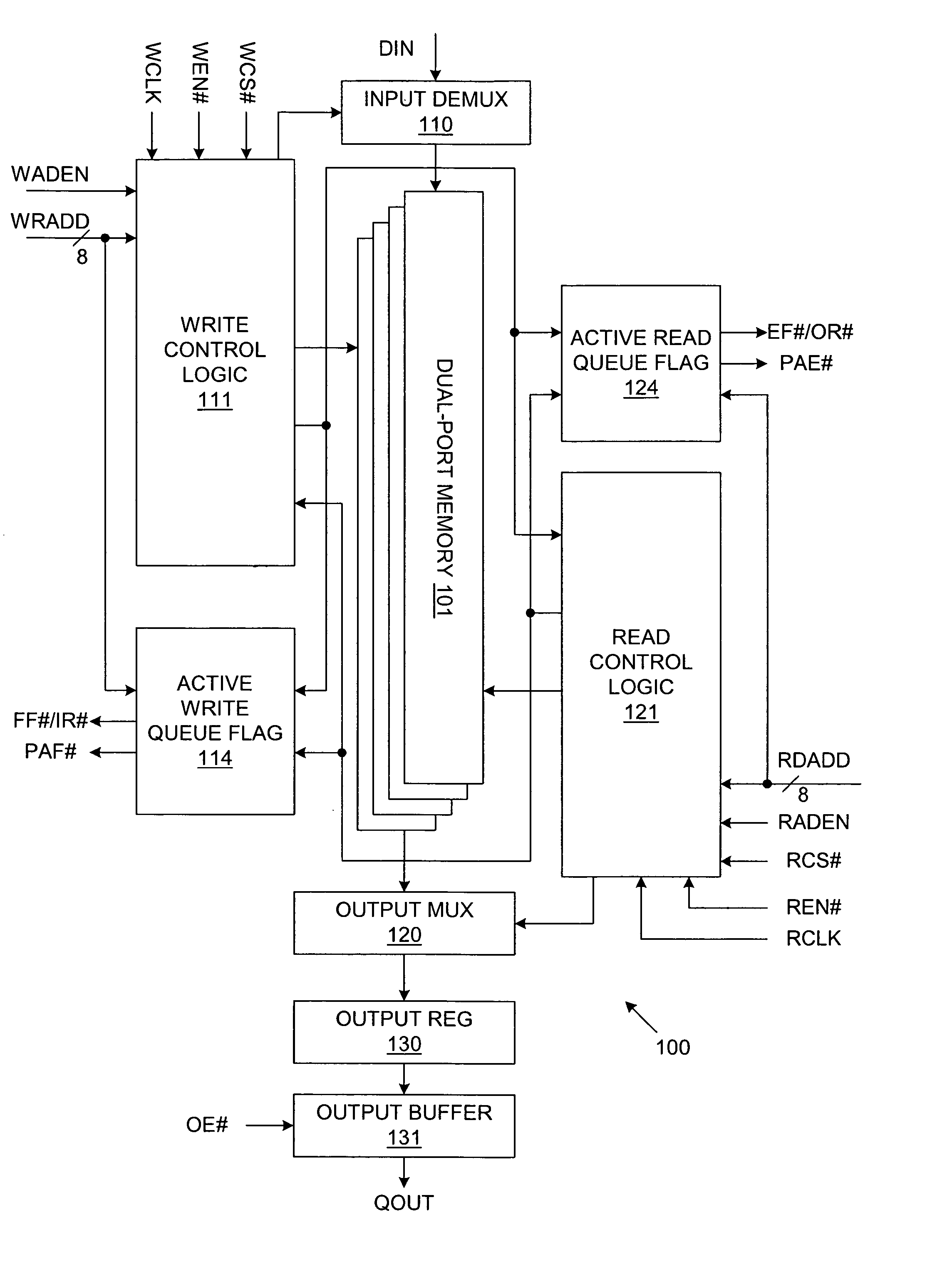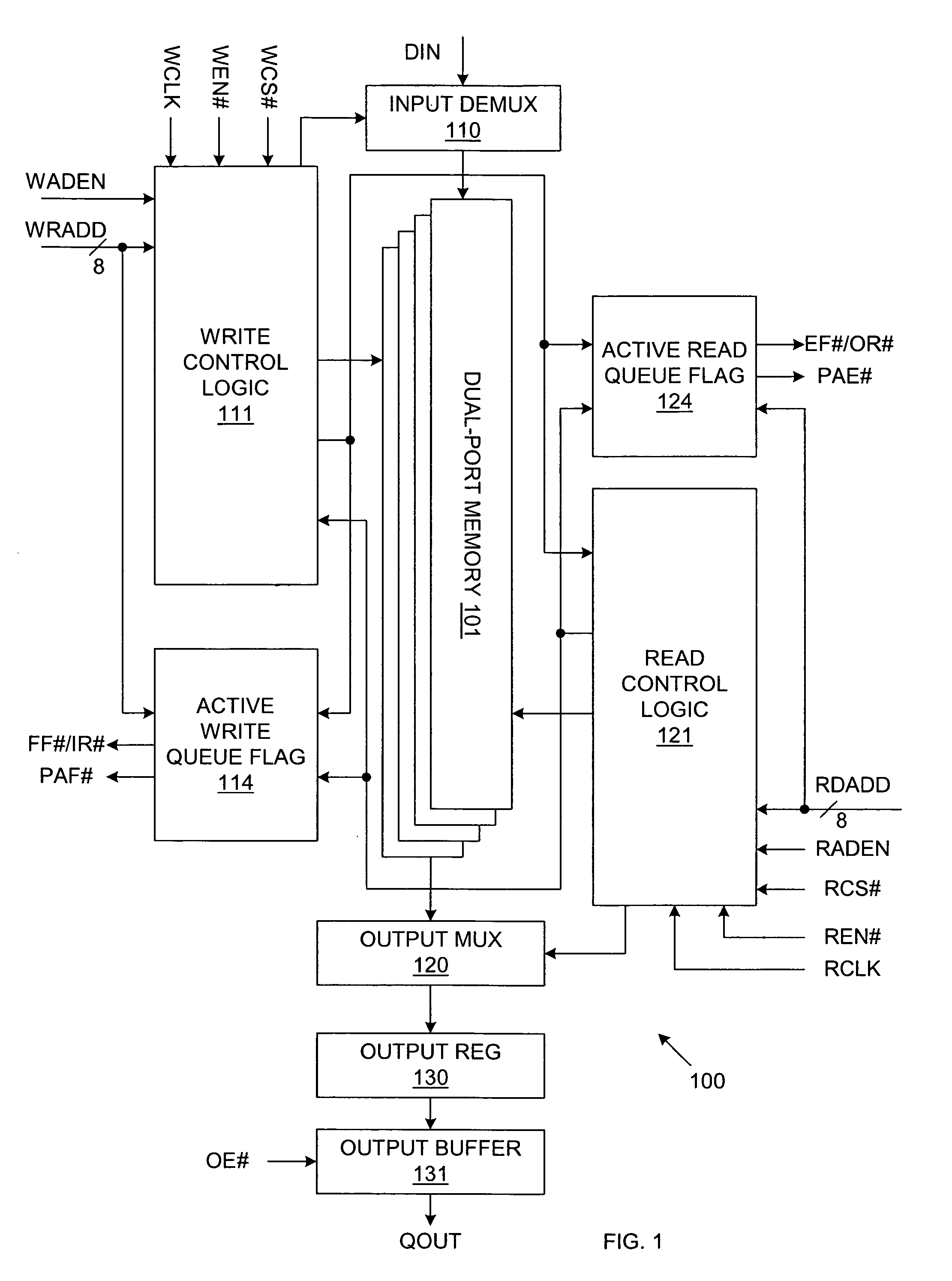Multi-queue address generator for start and end addresses in a multi-queue first-in first-out memory system
a multi-queue, memory system technology, applied in memory adressing/allocation/relocation, data conversion, instruments, etc., can solve the problems of serial bit stream initialization, additional logic and time for handshaking logic and communication of bit stream, and no local flexibility available for fifo queue programming
- Summary
- Abstract
- Description
- Claims
- Application Information
AI Technical Summary
Benefits of technology
Problems solved by technology
Method used
Image
Examples
Embodiment Construction
[0022] The present invention includes a multi-queue flow-control device, which is implemented on a single chip. The multi-queue device can be configured to implement between 1 and 128 discrete FIFO queues. The user has full flexibility configuring queues within the device, being able to program the total number of queues between 1 and 128. The user can also independently select the individual queue depths.
[0023] All queues within the device have a common data input bus (write port), and a common data output bus (read port). Data written to the write port is directed to a respective queue via an internal de-multiplexer, which is addressed by a user. Data read from the read port is accessed from a respective queue via an internal multiplexer, addressed by the user. Data writes and reads can be performed at high speeds (up to 200 MHz, with access times of 3.6 ns in accordance with one embodiment of the present invention). Data write and read operations are totally independent of each ...
PUM
 Login to View More
Login to View More Abstract
Description
Claims
Application Information
 Login to View More
Login to View More - R&D
- Intellectual Property
- Life Sciences
- Materials
- Tech Scout
- Unparalleled Data Quality
- Higher Quality Content
- 60% Fewer Hallucinations
Browse by: Latest US Patents, China's latest patents, Technical Efficacy Thesaurus, Application Domain, Technology Topic, Popular Technical Reports.
© 2025 PatSnap. All rights reserved.Legal|Privacy policy|Modern Slavery Act Transparency Statement|Sitemap|About US| Contact US: help@patsnap.com



